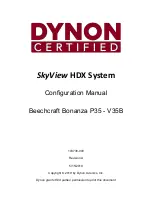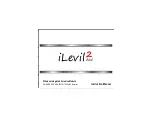
190-00820-11 Rev. A
Pilot’s Guide for the Cirrus SR2x with Cirrus Perspective by Garmin
413
HAZARD AVOIDANCE
SY
STEM
O
VER
VIEW
FLIGHT
INSTRUMENTS
EIS
AUDIO P
ANEL
& CNS
FLIGHT
MANA
GEMENT
HAZARD
AV
OID
ANCE
AFCS
ADDITIONAL
FEA
TURES
APPENDICES
INDEX
6.4 LIGHTNING DETECTION SYSTEM
WARNING:
Do not rely on information from a lightning detection system display as the sole basis for
hazardous weather avoidance. Range limitations and interference may cause the system to display inaccurate
or incomplete information. Refer to documentation from the lightning detection system manufacturer for
detailed information about the system.
NOTE:
Lightning information from data link services such as SiriusXM Weather or Garmin Connext cannot
be displayed at the same time as on-board lightning detection system data is selected for display.
The following pages can display on-board lightning detection system data:
• Stormscope Page
• AUX - Trip Planning Page
• Navigation Map
• Nearest Pages
• AUX - Video Page
To display lightning data on the Navigation Map, AUX - Trip Planning Page, or any of the Nearest Pages, select
the
MAP
Softkey, then select the
STRMSCP
Softkey. These pages can also display cell or strike data using the
lightning strike symbols shown in Table 6-14.
Table 6-14 Lightning Age and Symbols
SETTING UP LIGHTNING DETECTION ON THE NAVIGATION MAP
Setting up lightning detection options on the Navigation Map:
1)
On the Navigation Map Page, press the
MENU
Key.
2)
With ‘Map Setup’ selected (Figure 6-127), press the
ENT
Key.
3)
Turn the small
FMS
Knob to display the group selection window. Turn the small
FMS
Knob to select ‘Weather’
(Figure 6-90), and press the
ENT
Key.
4)
Turn the large
FMS
Knob to highlight and move between the product selections.
5)
When an item is highlighted, turn the small
FMS
Knob to select the option.
6)
Press the
ENT
Key.
7)
Press the
FMS
Knob to return to the Navigation Map Page (Figure 6-129).





































